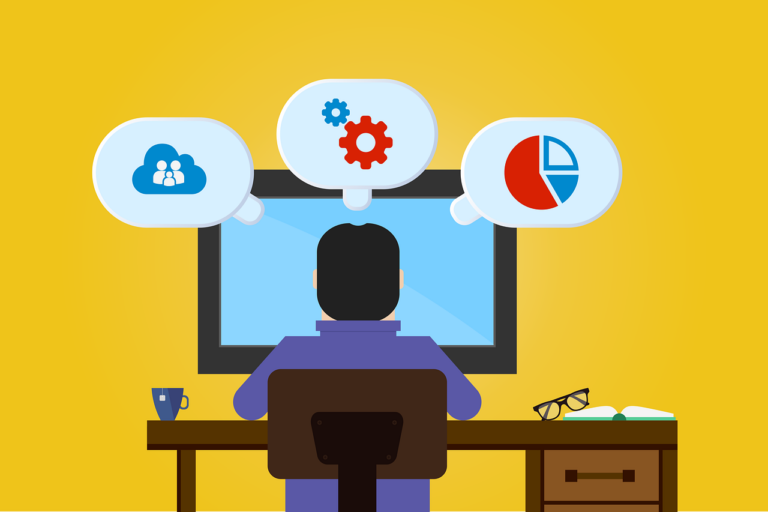Artificial Intelligence (AI) has transformed different areas of business activities, among them customer service. AI in chatbot software has become a pivotal tool for boosting consumer experiences. This involves delivering instant support and offering personalized interactions. Still, it takes a careful plan and strategy to implement chatbots effectively. Consequently, this guide will outline ways how to leverage AI-powered chatbots for improved customer experience and successful integration within your enterprise.
Understanding AI-Powered Chatbots
What are AI-powered chatbots?
AI-powered chatbots are computer programs that employ natural language processing (NLP) and machine learning algorithms to interact with customers in the same way as humans do. They understand customer inquiries, perform tasks such as booking flights or ordering food, and provide information like weather updates among others. Conversely, unlike rule-based bots that strictly follow predefined scripts, AI chatbots learn from their conversations and improve themselves over time to give more accurate responses that better fit the context.
Benefits of AI-Powered Chatbots
AI-powered chatbots offer many advantages including:
- Round-the-Clock Availability: Providing customer support services continuously without intervention by human beings.
- Scalability: Attending to several customers at once hence reducing waiting times.
- Cost Efficiency: Reducing operational costs through automation of routine tasks and support functions.
- Personalization: Analyzing customer data and preferences leads to customized experiences.
- Consistency: Ensuring uniformity in responses for higher satisfaction rates among clients.
Strategies for Effective Implementation
Identifying Business Goals And Use Cases
Before implementing an artificial intelligence-powered chatbot within your organization there is a need to ascertain your business goals as well as specific use cases. What you want the bot to do determines what goals you set whether it’s enhancing customer service or increasing sales amongst others. For instance, common uses include answering frequently asked questions (FAQ), helping with product recommendations, or carrying out basic troubleshooting tasks.
Choosing The Right Chatbot Platform
It is important to choose the right chatbot platform for effective implementation. Consider ease of integration, customization options, scalability, and support for multiple languages. Platforms such as Dialogflow, Microsoft Bot Framework, and IBM Watson provide a strong foundation for building and deploying AI chatbots.
Designing a User-Centric Experience
When designing your chatbot, bear in mind that you are targeting user experience. Ensure that the interface of the bot is easy to use by making it intuitive. Use clear and concise language while also ensuring quick response times. Additionally, incorporate things like quick reply buttons or guided prompts to assist users in navigating through the conversation effortlessly.
Integrating With Existing Systems
To work seamlessly, integrate your chatbot with other systems such as customer relationship management (CRM) software, e-commerce platforms as well as customer support tools. This way, the chatbot will have access to relevant customer information so that it can offer personalized contextual responses.
Training And Optimizing The Chatbot
The training of your bot should be an ongoing process. Begin with a comprehensive set of intentions and responses based on common customer queries. Analyze interactions using machine learning algorithms which learn from them thus improving accuracy over time. Regularly update the knowledge base of the bot adjusting its responses in light of feedback from customers.
Ensuring A Human Touch
Smooth Handoff To Human Agents
Even though many tasks can be handled by AI chatbots, there are situations where human intervention becomes necessary. Whenever the bot experiences complex or sensitive issues make sure it can seamlessly hand off conversations to human agents responsible for resolving such matters satisfactorily. Always remember to enable agents to have access to conversation history for continuity purposes avoiding irritating customers.
Personalization And Empathy
Customer experience is greatly enhanced by personalization; using consumer data when addressing different people makes them feel valued. Also, train your robot to recognize emotional cues as well so that you can respond empathetically building more human-like interactions.
Monitoring And Measuring Performance
Key Performance Indicators (KPIs)
Monitor your chatbot’s performance using KPIs like response time, SLA, customer satisfaction scores, and engagement metrics. The KPIs will enable you to gauge the efficiency of the chatbot and areas where it needs improvement.
Customer Feedback
Collect customers’ opinions about the chatbot by issuing them with questionnaires, and ratings or directly speaking to them. Customer feedback abets in tuning the bot so that it can work optimally and authenticate full contentment.
Future Trends in AI-Powered Chatbots
Advanced NLP and Sentiment Analysis
Advanced technology will see an improved functionality of chatbots in terms of handling complicated issues through natural language processing and sentiment analysis. This capability will make such a bot deal with difficult conversatias ons well as come up with relevant responses.
Multimodal Interactions
The popularity of multimodal interactions that incorporate text, voice, and visual inputs is growing. Companies now have access to chatbots which are more versatile in terms of offering richer customer experiences across multiple channels for both B2B and B2C businesses.
Proactive Customer Engagement
AI chatbots will move from reactive to proactive engagement by identifying customers’ desires before prompting them for assistance or recommendations thus making the user interface better. In this way, they can understand their users even before being asked anything.
Conclusion
AI-powered chatbot software has the potential to significantly improve customer experiences by providing instant, personalized, and efficient support. Its effective deployment necessitates a clear understanding of business objectives, careful selection of platforms, design centered on the user’s needs, plus continuous optimization. Seamless integration into existing systems ensures that bots do not disturb workflow when automation becomes too much yet there is a need for a human touch while assisting customers hence these AI-powered solutions should be developed accordingly. As AI technology continues to evolve, chatbots will become even more sophisticated, offering new opportunities for proactive and multimodal customer engagement. Stay ahead with efficient AI-driven chatbots that will give you the best customer support and market advantage to build lasting customer relationships.




